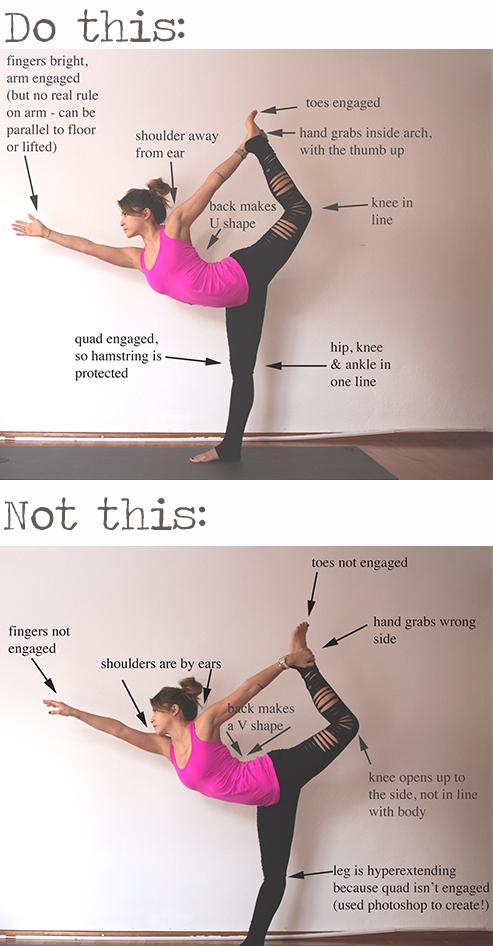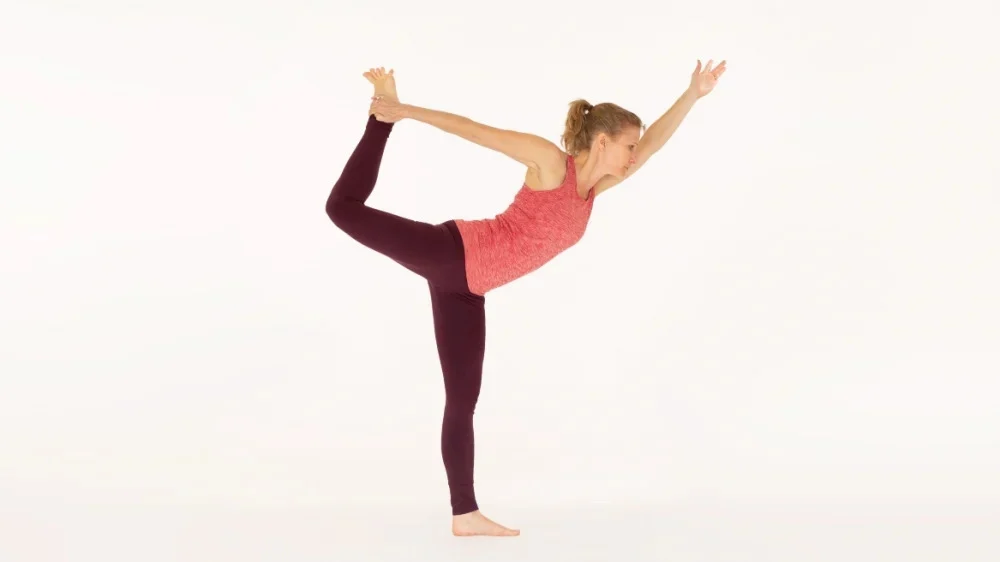India is a land rich in the science of life known as Ayurveda, which focuses on balancing the relationship between the body and mind. The country is also blessed with the treasures of yoga and asanas, with yoga promoting good health and asanas teaching physical and mental strengthening exercises. It is believed that Lord Shiva, known as Nataraja, the Lord of Dance, was the first to practice Yogasana. Shiva’s dance symbolizes destruction and creation, and his endless dance is considered the source of all movement in the universe. Inspired by Lord Shiva’s Nataraja avatar, let’s explore the benefits, techniques, and variations of the Natarajasana pose.
Benefits Of Dancer’s Pose
- For Weight Loss: Natarajasana, or Lord of the Dance Pose, is beneficial for weight loss as it engages multiple muscle groups, promoting calorie burn and enhancing metabolism.
- For Blood Circulation : This asana improves blood circulation throughout the body. The stretched posture encourages better circulation, ensuring that oxygen and nutrients reach all cells effectively.
- For Digestion : Natarajasana aids digestion by massaging and stimulating the abdominal organs. This can help alleviate digestive issues and promote a healthier gut.
- Full-Body Stretch: Natarajasana provides a comprehensive stretch to various body parts, including the legs, knees, ankles, chest, neck, abdomen, and hips, contributing to overall flexibility.
- Strengthens Legs: Balancing on one leg during this pose helps strengthen the bones and muscles of the legs, as they bear the weight of the entire body.
- Enhances Flexibility: Regular practice of Natarajasana can improve flexibility in the hamstrings, spine, and shoulders, promoting a wider range of motion.
- Thigh and Lower Back Stretch: This asana offers an excellent stretch to the thighs and lower back, potentially alleviating pain and stiffness.
Instructions (Step-by-Step)
- Start in Tadasana: Begin the pose in the Mountain pose, ensuring a strong and grounded foundation.
- Focus on a Point: Press firmly through both feet and find a point at eye level to maintain focus and balance.
- Bend Left Knee: On the exhale, bend your left knee and bring your left foot toward the buttock. Hold the outside of the left foot with the left hand.
- Engage Standing Leg: Keep the right hip firm, engage the right thigh and knee to strengthen the standing leg.
- Maintain Upright Torso: Keep the torso upright, chest open, and lengthen the tailbone down for proper alignment.
- Lift the Leg: Inhale and push the left foot back into the hand, lifting the leg until the thigh is parallel to the floor and the lower leg forms a right angle.
- Optional Arm Movement: Lift your right arm up in front of you, parallel to the floor or slightly higher next to the ear.
- Hold and Breathe: Stay in the pose for 5-10 breaths, maintaining balance and focus.
- Release and Repeat: To exit the pose, release the leg on an exhale. Repeat the sequence on the other side for balance.
Common Mistakes Of Dancer’s Pose
To execute this asana successfully, it’s crucial to prioritize the movement of the spine, ensuring a proper stretch in the posterior chain, hips, and shoulders. Neglecting this focus may result in undue strain in these areas. When incorporating this posture into a sequence, I’ll be attentive to prepare the spine for extension, the hips for flexion and extension, and the shoulders for flexion and external rotation.

- Ensure shoulders are straight without hunching, avoiding excessive arching.
- Lift the leg to a comfortable level, maintaining hip alignment and engaging the core for balance.
- Hold the foot without discomfort, keeping the standing leg active.
- When switching sides, stand straight with no rush.
- Use a focal point to enhance balance and avoid problems.
- Maintain steady and deep breaths throughout the pose.
- Practice within your limits and seek guidance from a certified yoga teacher.
- This asana is associated with the Solar Plexus Chakra, linked to personal power, self-esteem, and confidence.
Precautions Of Dancer’s Pose
Avoid Natarajasana if:
- You have knee pain
- Suffer from varicose veins
- Experience sciatic issues
- Have low blood pressure
- Avoid excessive stretching
- Spinal cord problems
- Pain in the waist, shoulders, hips, or knees during the pose
Modifications
- Natarajasana with Chair: Place a chair in front with its back towards you. Hold the chair for support and lift the alternate foot, grabbing the toe with the hand.
- Yoga strap: Hold a strap, step your foot on it, and form a loop. Pull the strap backward to lift the foot behind the head, using both hands.
- Against a Wall: Face a wall in Tadasana, lift the leg, and grab the foot. Extend the opposite arm forward, reaching the wall with fingertips. Gradually increase the distance for balance.
Variations

- Chest Opening: Hold onto your bent leg with both hands to intensify the chest opening. Ensure good balance.
- Foot Hold from Inside: Try holding the foot from the inside, altering the stretch in the shoulder slightly.
Dancer’s Pose For Beginners
Tips For Beginners
To enhance your Natarajasana, consider using a belt. Loop it around your left foot, ensuring the strap comes over your shoulder from the back. Gradually walk your hands down the belt, with elbows pointing to the ceiling and hands behind the back, lifting the foot slowly. This method offers support and aids in achieving the full expression of the pose.
Practice Dancer’s Pose For Beginners By Following These Steps

- Exhale and bend your left knee, bringing the left foot towards the buttock.
- Hold the outside of your left foot with the left hand.
- Firm the right hip in and engage your right thigh and knee for a strong standing leg.
- Keep the torso upright, the chest open, and lengthen your tailbone down.
Learn this pose perfectly under our certified yoga trainer. Join our online yoga classes now. Browse More Balancing Yogasanas and complete Yogasanas Library.





